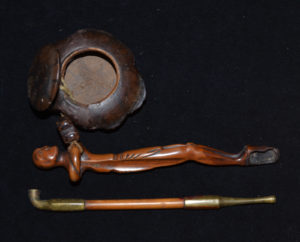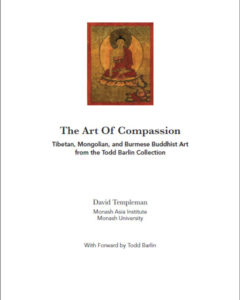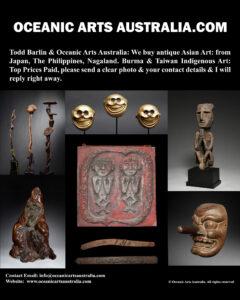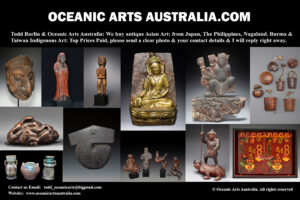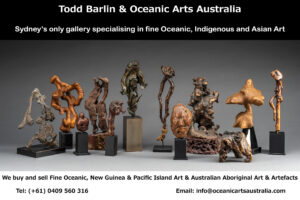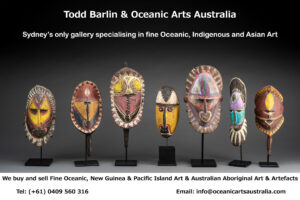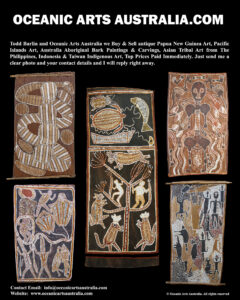A Fine Old Japanese Tobacco Case with Pipe Holder in Human Form
| Collection No. | SOLD but see lots more Fine Oceanic & Aboriginal Art on my website |
|---|---|
| Size | The Wood Tobacco Case 9cm & Pipe Case is 20.5 cm |
A Fine Antique Japanese Tobacco Case with Pipe Holder in Human Form Dating from the 19th Century.
This beautiful old Japanese Tobacco Case is carved from burlwood and keeping to a natural form.
There is a small carved wood Ojime with three holes in it and the wood Pipe Holder is carved in the form of a standing man with his arms in a circle. The pipe is made from bronze & bamboo.
Some of the most beautiful small objects made in Japan were used for Tobacco Smoking. Their unique beauty, there is such variation from the most simple natural form burl wood containers to the elaborately carved wood examples with finely incised designs.
The Portuguese introduced tobacco in Japan in the second half of the sixteenth century. The Japanese were particularly surprised to see the Portuguese smoking pipes and spitting out smoke and would have exclaimed: “The Southern Barbarians have a fire in their belly!”
Tobacco was quickly adopted by the Japanese people by the end of the sixteenth century, the Kerisu or Smoking Pipes were used as the only way to smoke tobacco in Japan and it would remain that way for the next three centuries, until the Meiji Restoration (1868), when cigarettes arrived in Japan and became very popular.
The smoking implements needed to smoke while outside or traveling were a set consisting of a pouch to hold the tobacco called TONKOTSU and the Pipe or Kerisu & its holder. Tobacco pouches were usually beautifully decorated and with delicate metal clasps to close the pouch, they also had a Netsuke on the end of a small chain or string to tuck into the traditional sash called (Obi). Japanese robes did not have pockets & that is why their tobacco smoking sets were tucked into their sash.
In the Edo period in Japan (1603-1868) and before the development of cigarettes in Japan was the heyday of Kiseru Pipes and tobacco smoking paraphernalia. In the Edo period, there was in the high society a ” Tobacco Ceremony” or ” The Way of Tobacco” (tabako-dō 烟草道), similar to the Japanese “Tea Ceremony” where rules of politeness and decorum were fixed and there were procedures or good manners to give and receive the Kiseru pipes when smoking with the company.
Provenance: Old Australian Collection. The Todd Barlin Collection of Asian Art & Buddhist Art
See my new EXHIBITIONS GALLERY showing the Museums and Art Galleries Exhibitions that I provided artworks for over the past 40 years. There is the link to the article about my artworks published in the prestigious Louvre Magazine in 1996
I have artwork for Museums and art Galleries but also for collectors at every stage of their collecting. I want to encourage people to explore the fine art of New Guinea & West Papua and the Pacific Islands and to be able to see and touch the artworks in a relaxed and friendly manner in my Sydney Gallery. I would like to invite you to visit my gallery and see the artworks in person and also look at my website www.oceanicartsaustralia.com where there are many Galleries & Sub Galleries to explore.
My Gallery of nearly 40 years is the last physical gallery in Sydney that specializes in New Guinea and Oceanic Art. Sydney is very close to New Guinea & the Pacific Islands where all of these amazing artworks came from, Australia’s closest neighbors.
To see many more rare items and the finest masterpieces, please make an appointment with us to visit the gallery.
For all inquiries, please contact us

